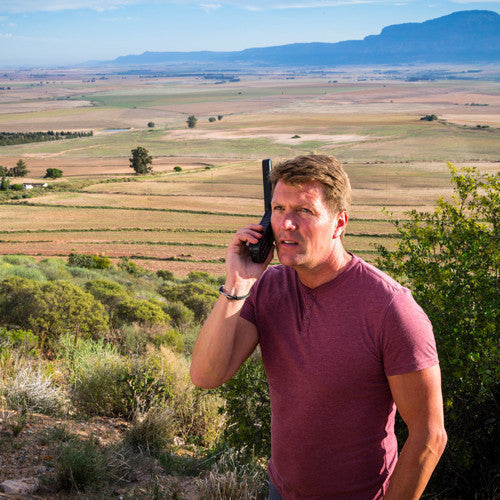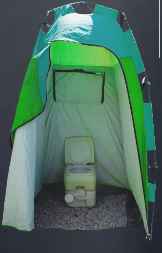Exploring the Best Viewpoints on the Machu Picchu Circuit
Machu Picchu, nestled high in the Peruvian Andes, stands as one of the New Seven Wonders of the World and is a UNESCO World Heritage Site. This ancient Inca city, built in the 15th century, is renowned for its stunning architecture, advanced engineering, and the mystery that still surrounds its purpose.
For many travelers, visiting Machu Picchu is a once-in-a-lifetime experience that offers a profound connection to the ancient world and breathtaking natural beauty.

To truly capture the essence of Machu Picchu, exploring its viewpoints along the machu picchu circuit is essential. These viewpoints, such as the Guardhouse, Intihuatana, and the Temple of the Condor, provide diverse perspectives of the archaeological marvel and its surrounding landscapes, including panoramic views of lush mountains, mystical sunrises, and cloud-kissed ruins.
Each vantage point tells a story of Inca ingenuity and spiritual beliefs, making them integral to understanding the site’s significance.
At Alpaca Expeditions, we specialize in guided tours that take you through these iconic viewpoints, offering deep insights into the history, culture, and natural beauty of Machu Picchu. Our experienced guides ensure a memorable journey, helping you fully immerse yourself in the magic of this ancient wonder.
The Guardhouse or Classic Machu Picchu Viewpoint:
The Guardhouse, also known as the Classic Machu Picchu Viewpoint, is arguably the most iconic vantage point in Machu Picchu. Perched on a terrace overlooking the ancient citadel, this spot is the quintessential view that graces postcards and travel brochures worldwide.
From here, visitors are treated to a sweeping panoramic view of the entire site, framed beautifully by the majestic peak of Huayna Picchu rising in the background. This viewpoint provides an unparalleled perspective of Machu Picchu’s grandeur, revealing the intricate layout of its terraces, temples, and plazas.
As the first stop for many entering the site, the Guardhouse is a significant starting point that sets the tone for the rest of the exploration. To make the most of this viewpoint, it’s best to arrive early in the morning or later in the afternoon to avoid the midday crowds.
For capturing the perfect photograph, position yourself slightly to the side of the Guardhouse to include both Machu Picchu and Huayna Picchu in your frame. The soft morning or late afternoon light will add depth and contrast, bringing out the textures of the stone structures and lush greenery surrounding the site.
Machu Picchu Main Entrance Gate:
The Machu Picchu Main Entrance Gate is where the awe-inspiring journey into this ancient wonder truly begins. As the gateway to the Inca citadel, this entrance sets the stage for what lies ahead—an unforgettable exploration of history, culture, and nature. From here, visitors get their first glimpse of the sprawling ruins nestled high in the Andes Mountains, creating an immediate sense of anticipation and wonder.
This viewpoint is significant not only as the physical entrance but also as the emotional starting point of the Machu Picchu experience. It offers a breathtaking panoramic view that allows travelers to take in the grand scale of the archaeological site, including the iconic Huayna Picchu peak towering in the background. It serves as a perfect backdrop for capturing memorable first impressions.

To make the most of this experience, it’s recommended to visit the Main Entrance Gate early in the morning. As the sun rises and casts its golden light across the ancient stone terraces and temples, the ruins are illuminated in a warm glow, enhancing the site’s mystical ambiance. This is also the best time to avoid crowds and enjoy the tranquility and serenity of this sacred place.
The Sun Temple Viewpoint (Inca Quarry):
The Sun Temple, also known as the Torreón, is a remarkable viewpoint within the Machu Picchu complex, offering a unique glimpse into the astronomical and spiritual practices of the Inca civilization.
Situated on a curved rock formation, the temple is strategically aligned to capture the first rays of the sun during the winter solstice, showcasing the Incas’ advanced understanding of celestial movements.
This site was likely used for sun worship, a vital aspect of Inca culture, where priests conducted ceremonies to honor Inti, the Sun God, ensuring agricultural fertility and harmony with nature.
Visitors to the Sun Temple can appreciate its semi-circular architecture and the meticulously carved stones, which reflect the sophistication of Inca masonry. To capture the best photographs, position yourself at a slight elevation from the temple to include both the structure and the breathtaking backdrop of the Andean mountains.
Early morning light is ideal for highlighting the intricate stonework and the temple’s unique positioning against the natural landscape. Our guided tours provide insights into the cultural significance of the Sun Temple, allowing visitors to connect deeply with this sacred viewpoint’s history and spiritual essence.
Sacred Plaza and Temple of Three Windows
The Sacred Plaza is one of the most important and central areas in Machu Picchu, featuring some of the site’s most significant structures, including the Temple of Three Windows. This plaza served as a ceremonial and religious hub for the Incas, where rituals, gatherings, and important ceremonies took place. The Sacred Plaza offers a sweeping view of the surrounding mountains, adding to its spiritual ambiance.
The Temple of Three Windows is an architectural marvel, showcasing the ingenuity of Inca construction. Built with large, precisely cut stones, the three trapezoidal windows are believed to represent the three levels of the Inca universe: Ukhu Pacha (the underworld), Kay Pacha (the world of the living), and Hanan Pacha (the heavens). This symbolic representation reflects the Inca’s deep connection to the cosmos and their understanding of the natural and spiritual worlds.

For a serene and reflective experience, it’s advisable to visit the Sacred Plaza during quieter times, such as early mornings or late afternoons. This allows you to truly absorb the tranquil atmosphere and marvel at the intricate stonework, while contemplating the spiritual significance of this sacred Inca site.
Intihuatana (Sundial):
The Intihuatana, often referred to as the “sundial” or “hitching post of the sun,” is one of the most intriguing and revered structures at Machu Picchu. This meticulously carved stone is believed to have played a crucial role in Inca astronomy and ceremonial practices.
The name Intihuatana translates to “the place where the sun is tied,” reflecting its significance in tracking the sun’s movements and marking important solar events.
Inca astronomers used the Intihuatana to align with celestial bodies, particularly during solstices, which were key to agricultural and ritualistic calendars. The stone’s precise alignment with the sun during these pivotal moments showcases the Incas’ advanced understanding of astronomy.
The priests used the Intihuatana to forecast solar events and pay homage to the sun god, Inti. This ensured his favor and maintained cosmic balance.
Visitors often feel a unique sense of spirituality at this site. Approach the Intihuatana with respect and mindfulness to fully experience its energy and reflect on its historical and cultural significance.
During the early morning or late afternoon visits provide a serene atmosphere, enhancing the connection to the ancient rituals once performed here.
Sacred Rock:
The Sacred Rock, nestled within the Machu Picchu complex, is a captivating yet lesser-known viewpoint that holds significant cultural and spiritual value. This rock formation, often overshadowed by more prominent landmarks, offers profound insights into Inca spirituality and cosmology.
The Inca people strategically align The Sacred Rock with the surrounding mountains, reflecting their deep reverence for nature and belief in the sacredness of the natural world.

The alignment of the Sacred Rock with peaks such as Machu Picchu Mountain and Huayna Picchu underscores its role in Inca ceremonies and astronomical observations. The Inca people believed that this symbol represented the balance between the earthly and the divine, reflecting their deep understanding of celestial events and their integration into daily life and spiritual practices.
To fully appreciate the Sacred Rock, incorporate it into your Machu Picchu circuit by taking a moment to observe its placement and significance. This viewpoint enriches your understanding of Inca spirituality and provides a deeper connection to the ancient culture.
For a comprehensive experience, consider visiting this site during quieter times, allowing for a reflective moment amidst the grandeur of Machu Picchu.
Temple of the Condor and the Water Mirror’s Room
The Temple of the Condor is one of Machu Picchu’s most fascinating architectural wonders, ingeniously designed to resemble a condor in flight. This sacred structure holds deep symbolic significance in Inca culture, representing the condor as a powerful spiritual messenger and a symbol of the upper world.
In Andean cosmology, the majestic bird soars with outstretched wings, connecting the earthly realm to the heavens and reflecting its importance in the temple’s layout.
Nearby, the Water Mirror’s Room offers another captivating viewpoint. This lesser-known site features a reflective stone platform that once held water, creating a natural mirror that beautifully mirrored the surrounding ruins and lush landscape.
The room’s reflective quality not only served an aesthetic purpose but also had ceremonial significance, aligning with Inca beliefs about the harmony between nature and spirituality.
To fully appreciate these sites, it’s best to visit early in the morning or late afternoon when the light is soft and the crowds are fewer. This timing allows for a more serene experience and the opportunity to witness the symbolic connection between the Inca’s spiritual beliefs and their architectural marvels.
Tips for a Memorable Experience on the Machu Picchu Circuit
Navigating the Machu Picchu circuit requires some preparation to ensure a smooth and enjoyable experience. Start your day early to avoid the crowds and make the most of the cooler morning temperatures.
The best times to visit each viewpoint are early in the morning or late in the afternoon when the light enhances the beauty of the ancient ruins and provides optimal conditions for photography.
Comfortable footwear is essential as the circuit involves walking on uneven terrain. Choose sturdy, supportive shoes that can handle both uphill as well as downhill sections. Bring plenty of water to stay hydrated throughout your exploration, and use sunscreen and a hat to protect yourself from the strong Andean sun.
We provide knowledgeable guides who offer in-depth historical and cultural insights, enhancing your understanding of Machu Picchu’s rich heritage. Their expertise ensures you get the most out of your visit, answering questions and sharing fascinating details about each viewpoint and its significance.
By following these tips and relying on our experienced guides, you’ll have a truly memorable and enriching Machu Picchu experience.
Wrapping Up
Exploring the best viewpoints on the Machu Picchu circuit offers a unique opportunity to fully appreciate the grandeur and mystique of this ancient wonder. From the iconic Guardhouse providing classic views to the spiritually significant Intihuatana sundial, each viewpoint reveals a different facet of Machu Picchu’s historical and cultural richness.
By visiting these diverse spots, you’ll gain a deeper understanding of the Inca civilization and experience the breathtaking beauty of the surrounding landscape.
To ensure a comprehensive and enriching experience, consider booking your Machu Picchu circuit with us. As the #1 tour operator in Peru, we provide expertly guided tours that highlight the significance of each viewpoint while ensuring a seamless as well as memorable adventure.
With daily departures and various options to suit your needs, we make it easy to explore Machu Picchu’s wonders at your own pace.
In high demand and with limited availability are the permits for the Inca Trail and Machu Picchchu circuit. Book early to secure your spot and avoid disappointment. If your preferred dates are unavailable, then Alpaca Expeditions also offers exceptional alternative treks around Peru.
Contact our team today to start planning your unforgettable journey through the heart of the Inca Empire.
Alpaca Expeditions Recognitions
ISO (International Organization for Standardization)
In the pursuit to stand out from the rest, Alpaca Expeditions has obtained four ISOs plus our carbon footprint certificate to date. These achievements result from our efforts to implement the internationally-recognized integrated management system. They also represent our commitment to all of our clients and staff of operating sustainability and responsibility in every way possible.



































 Porters will carry up to 7 kg of your personal items, which must include your sleeping bag and air mat (if you bring or rent one). From us, these two items weigh a combined total of 3.5 kg.
Porters will carry up to 7 kg of your personal items, which must include your sleeping bag and air mat (if you bring or rent one). From us, these two items weigh a combined total of 3.5 kg.

